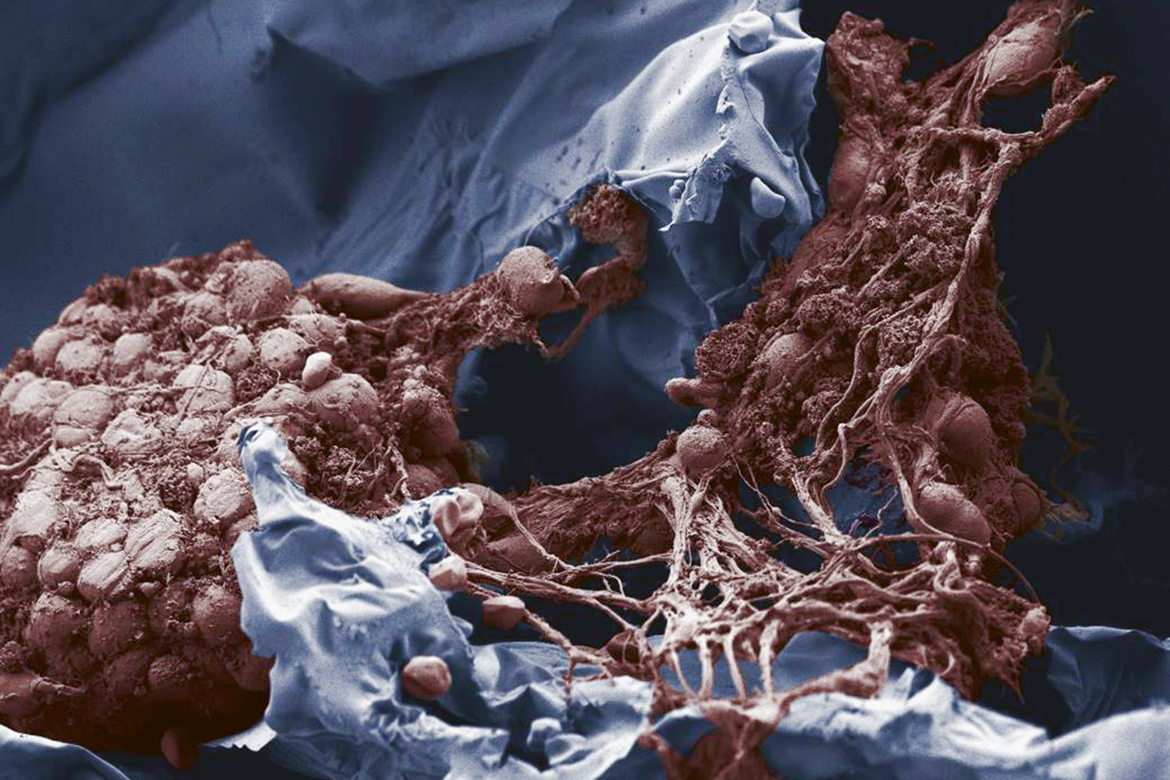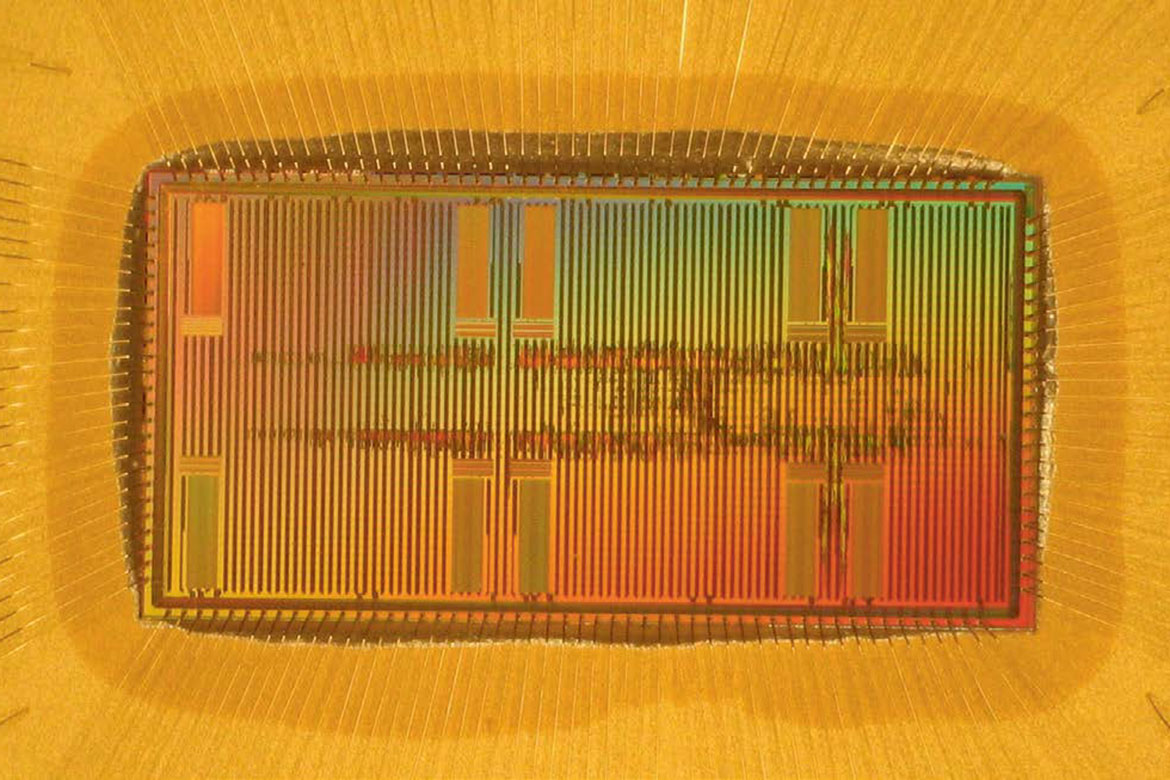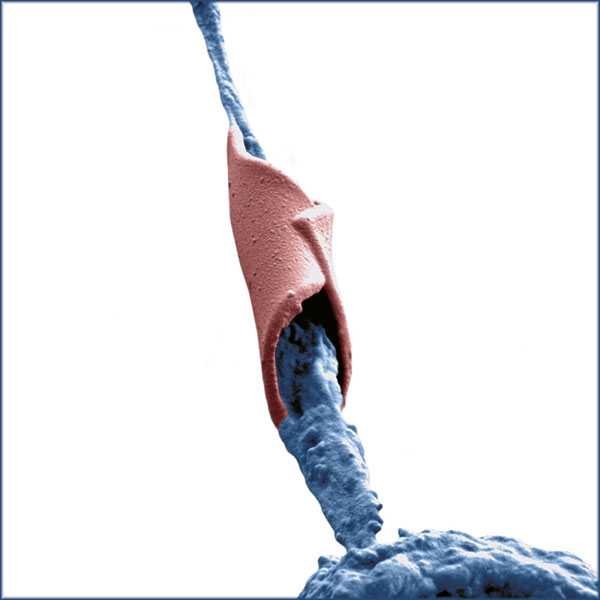Nerve cells on a chip
An ETH Zurich spinoff, inspired by the structure of the brain, is developing new computer chips. They could solve complex tasks in smartphones, for example, while still using very little electricity.
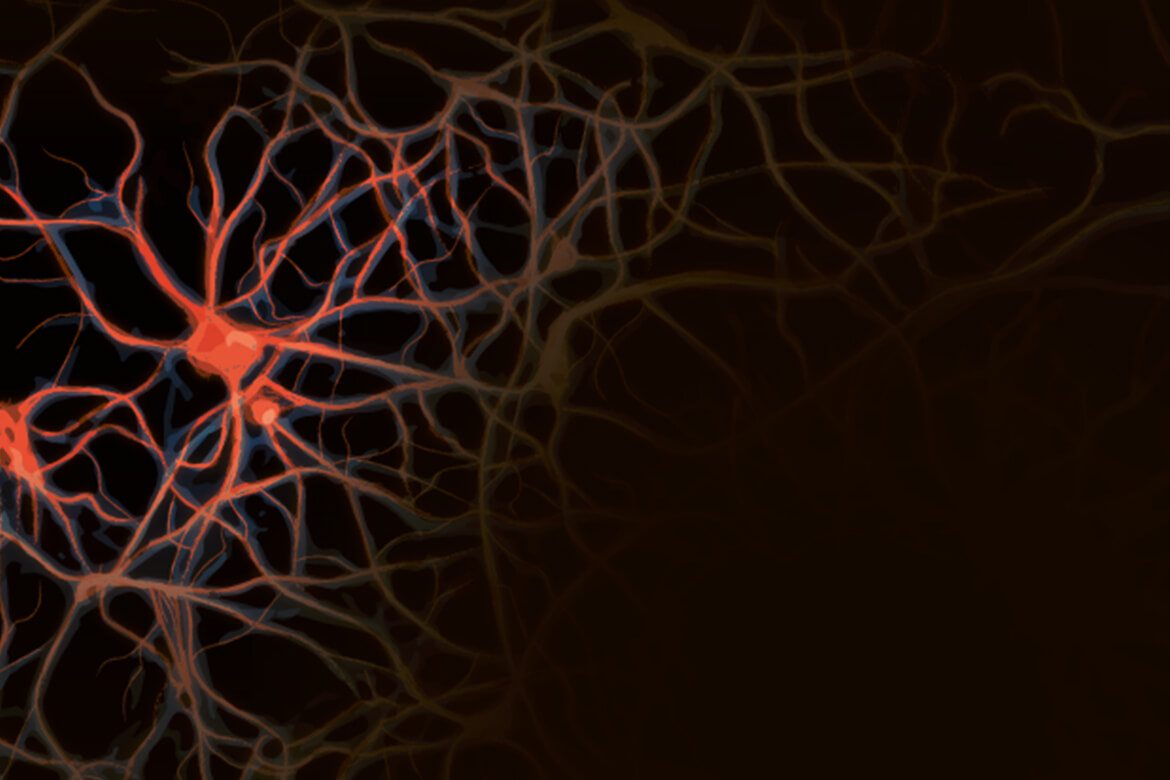
Illustration: ikonaut
Thanks to its decentral information processing system, the brain requires very little energy for the amount of data it processes. Individual neural networks can store information and process it at the same time. A piece of information that enters it can thus exit it as a new, combined unit of information.
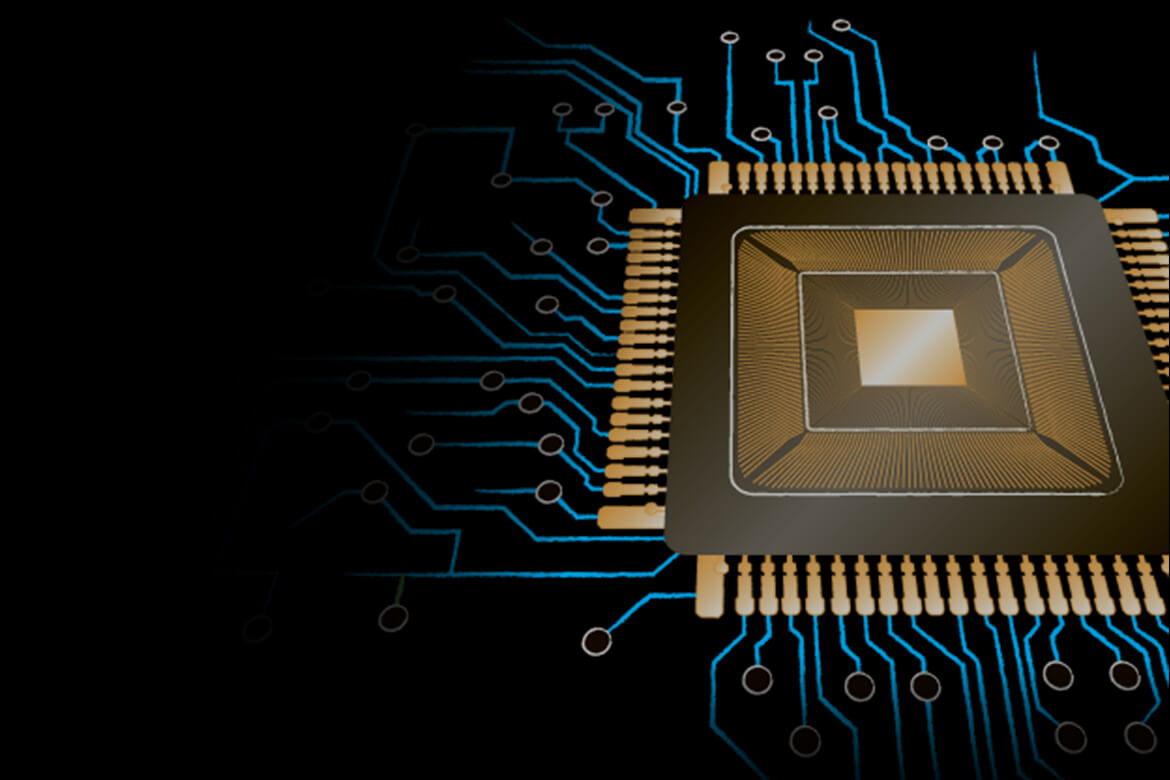
Illustration: ikonaut
The ETH Zurich spinoff company Aictx is imitating the structure of the brain in its computer chips. It does not arrange its tiny switches in the usual, digital manner, resulting in just ones and zeros, but instead mimics the way that nerve cells function. The resultant networks, comprising virtual cells, do not transmit a constant stream of signals like common-or-garden chips, but only when they actually have new information to process. This enables even simple devices to solve complex tasks.

Illustration: ikonaut
Sensors, batteries and chips have long been running autonomously. Aictx wants to use its chips in the following situations.
- To monitor the rhythm of the heart through an implant that sounds the alarm as soon as it notices any unusual activity.
- To recognise whether someone is looking at their smartphone. When this is the case, the phone turns itself on. After the chip is properly ‘trained’, it will even identify the face of the phone’s owner.


